
Apple has just announced the Apple Watch Ultra 3, and as expected, added satellite messaging as well as a larger and brighter display. That’s in addition to a number of other hardware and software improvements. Beyond this, the company announced the Apple Watch Series 11, as well as the new Apple Watch SE 3. And perhaps most notably: All of the existing pricing remains the same – there were no price increases here for watches.
The lineup gets the previously announced WatchOS 26 and Workout Buddy, but all three watches also get new sleep score features, as well as all units getting 5G cellular connectivity for the cellular editions.
Let’s dive into a quick overview of things, and then down the road I’ll have a full in-depth review of them.
What’s New:
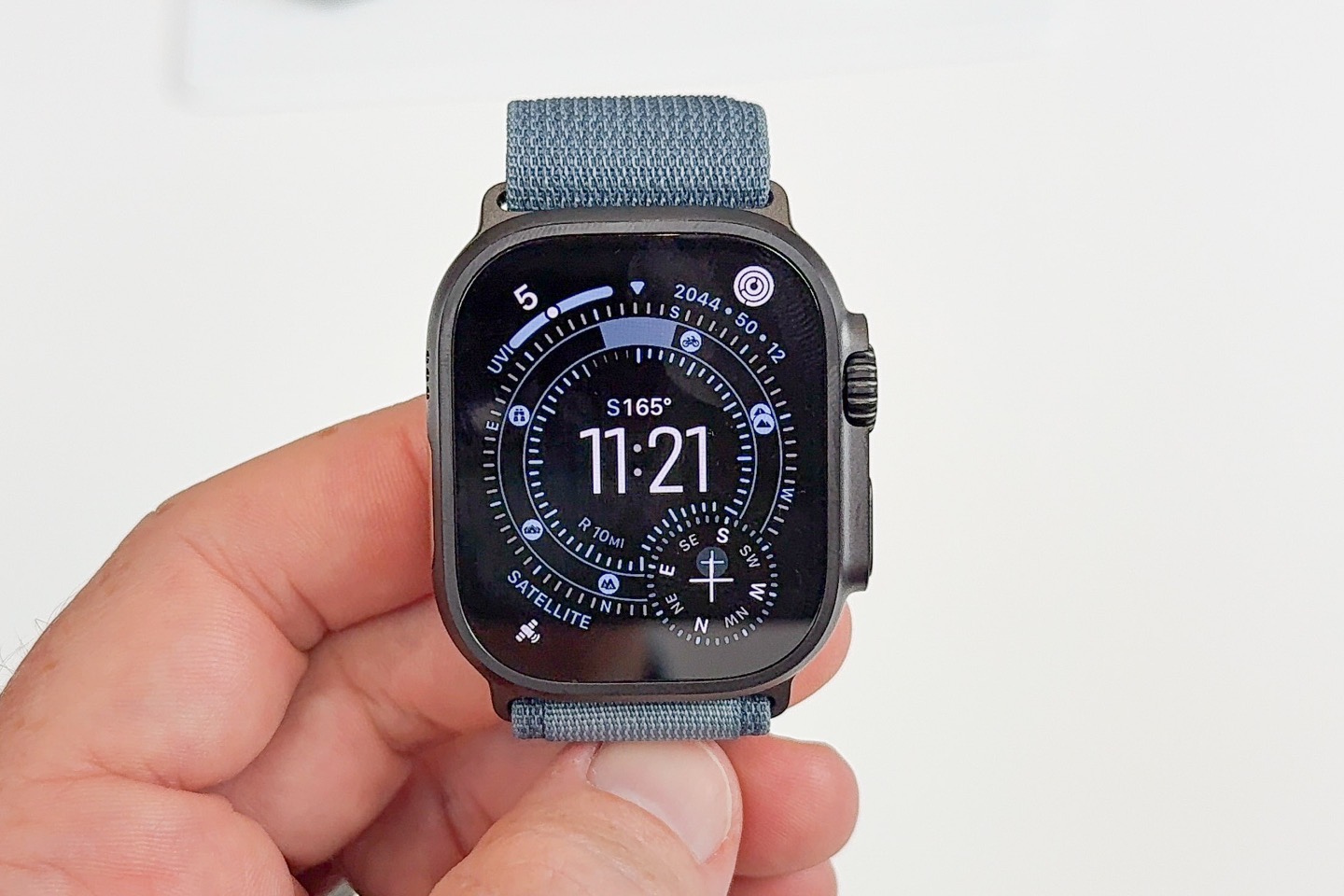
Here’s everything that’s changed, compared to the Apple Watch Ultra 2:
– New display for increased viewing angle brightness
– Increased display size to largest in an Apple Watch (roughly 5% bigger in pixel sq mm)
– New LTPO3 display increased refresh rate in always-on mode “without impacting battery”
– Added ability to see ticking seconds in watch faces in dimmed always-on state
– Decreased bezel/borders slightly (but same case size)
– Added new Waypoint watch face
– Added 5G cellular
– Added Satellite SOS
– Added Satellite text messaging
– Added Satellite FindMy location sharing
– Apple says they doubled the signal strength compared to Ultra 2
– Added Hypertension tracking/notifications (pending FDA approval)
– Added sleep score (coming to all WatchOS 26 units)
– Increased battery life to 42 hours of regular battery life, from 36 hours
– Available in both black and natural titanium (like before)
– Added new band colors
– Price remains $799USD (including cellular hardware)
The Apple Watch Ultra 3 will be available for pre-order today, and start shipping on September 19th. The satellite messaging pieces will be free for two years, after which, Apple may or may not decide to charge for them (just as they’ve not yet charged for other satellite features to date)
Looking at the display real quick, here’s how the Apple Watch Ultra 3 compares to the existing Apple Watch Ultra 2:
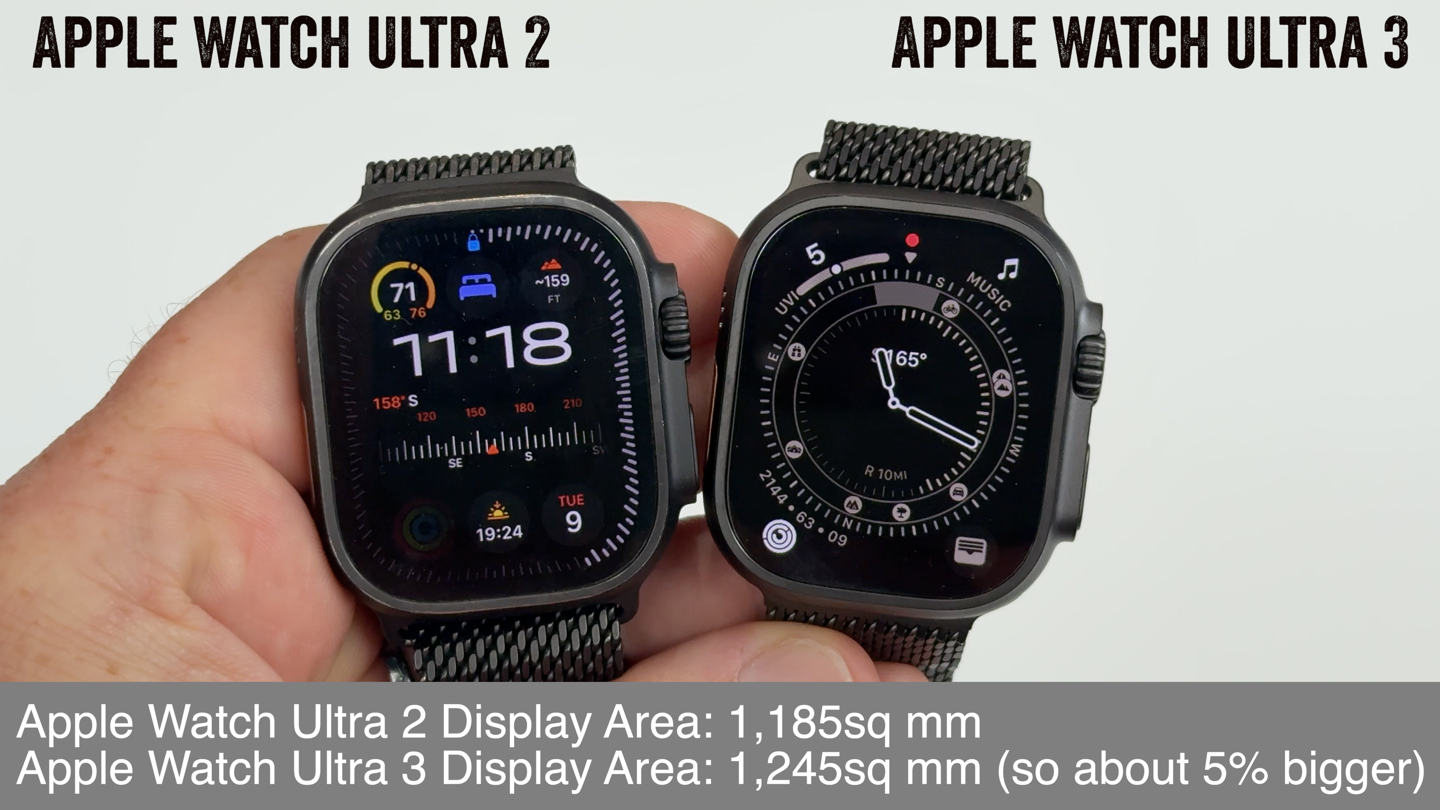
You can see the difference at a lower viewing angle:
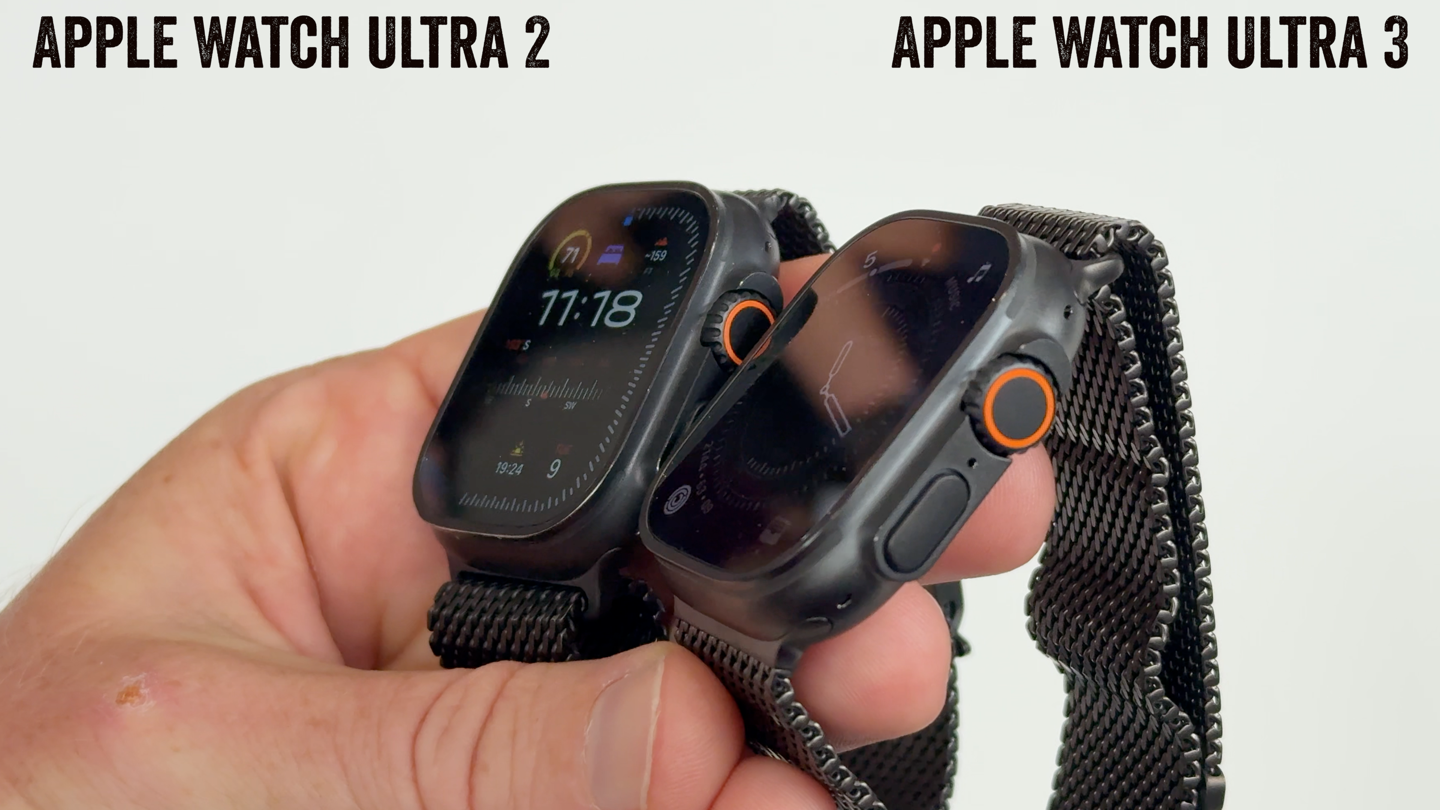
And you can see the decreased bezel area (between display and frame) compared to the Ultra 2:
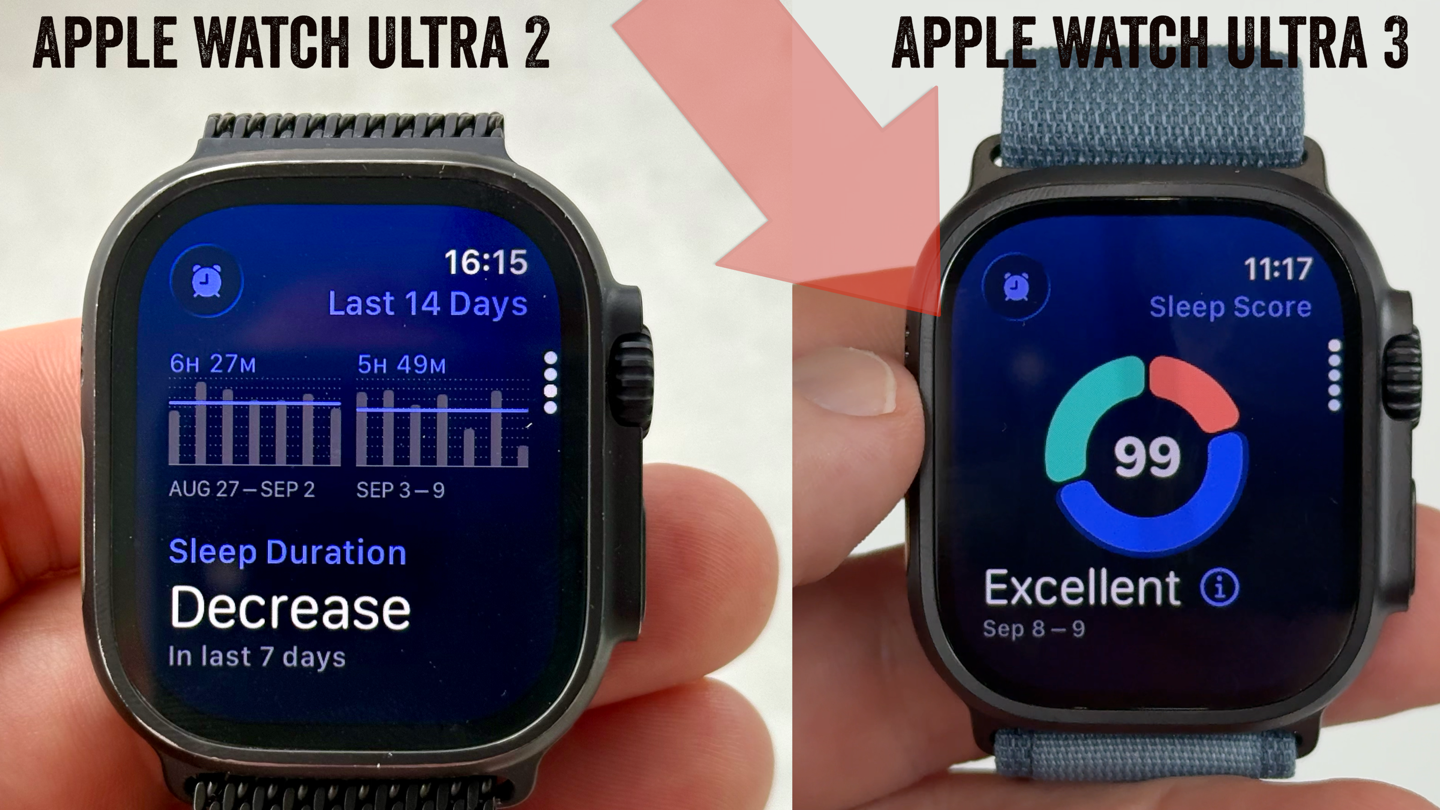
There’s, of course, a slate of other new bands as well across all the usual band realms within the Apple Watch sphere (e.g., Nike, Hermes, etc).
How the Satellite Messaging Pieces Work:
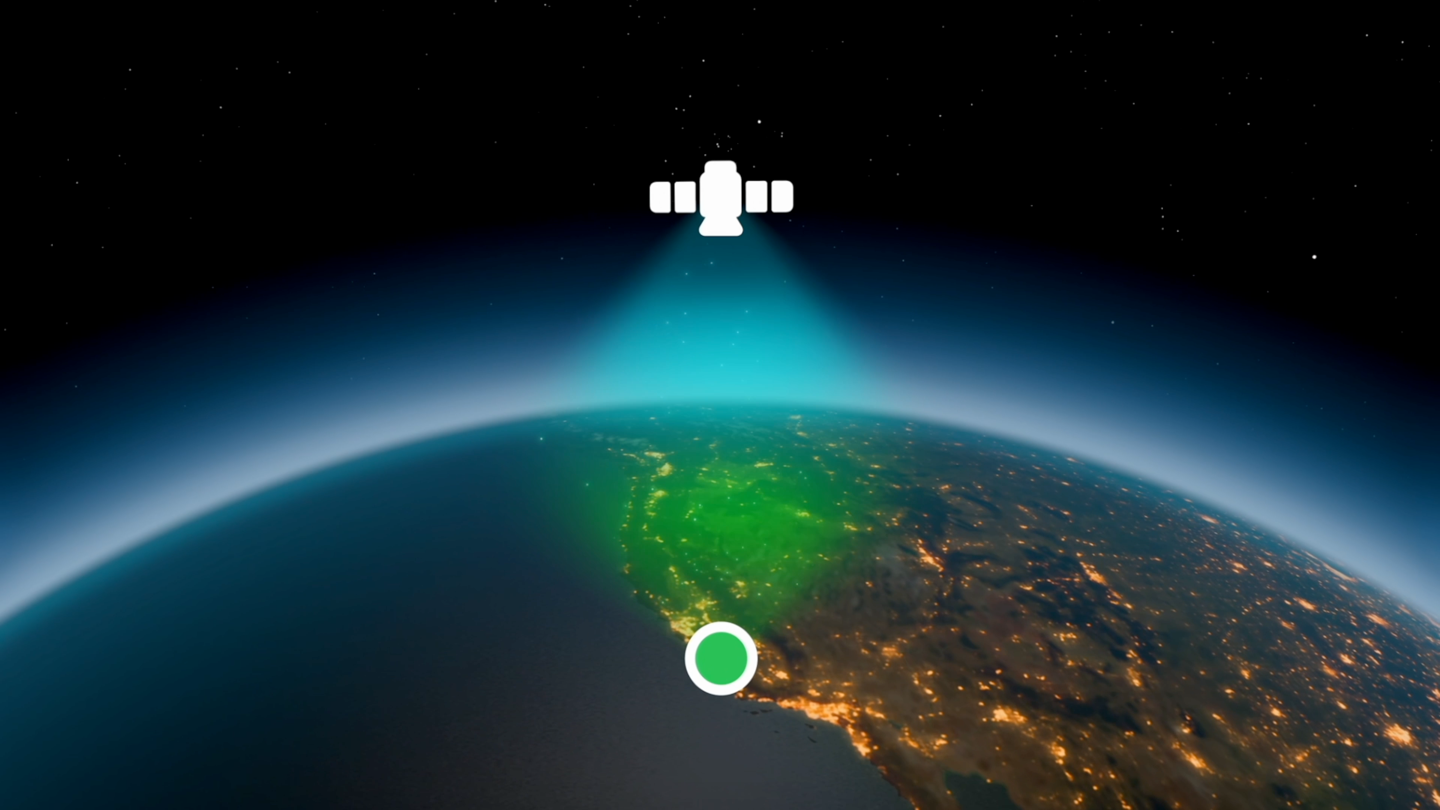
Apple becomes the third company in as many weeks to announce satellite messaging from the wrist, following Google and Garmin. Apple allows you to reach emergency SOS services, as well as regular text messaging, plus sharing of FindMy location.
In order to message via satellite (for either emergency or regular purposes), you’ll need to be aware of where things are available:
– Satellite SOS (Emergency): All 17 countries currently supported by the iPhone Emergency SOS*
– Satellite text messaging (regular chatting): 3 countries: US, Canada, Mexico
– Sending FindMy location/position (non-emergency): All 18 countries supported by the iPhone for FindMy (basically includes Mexico that’s not in the SOS list)
Here’s the list of countries for the above:
Satellite SOS: Australia, Austria, Belgium, Canada, France, Germany, Ireland, Italy, Japan, Luxembourg, Netherlands, New Zealand, Portugal, Spain, Switzerland, the U.K., and the U.S
FindMy Updates (simply adds Mexico to list above): Australia, Austria, Belgium, Canada, France, Germany, Ireland, Italy, Japan, Luxembourg, Mexico, Netherlands, New Zealand, Portugal, Spain, Switzerland, the U.K., and the U.S
Next, you’ll need one more piece to remember:
– Satellite SOS: Available without a cellular plan attached to the watch
– Satellite text messaging: Requires a cellular plan from any supported carrier in US, Canada, or Mexico
Ok, with that backstory, you’ve got the three core scenarios above.
If it’s an emergency SOS situation, it’ll ask you the typical flow of questions related to the emergency situation. It’s simply now optimized for the smaller screen:
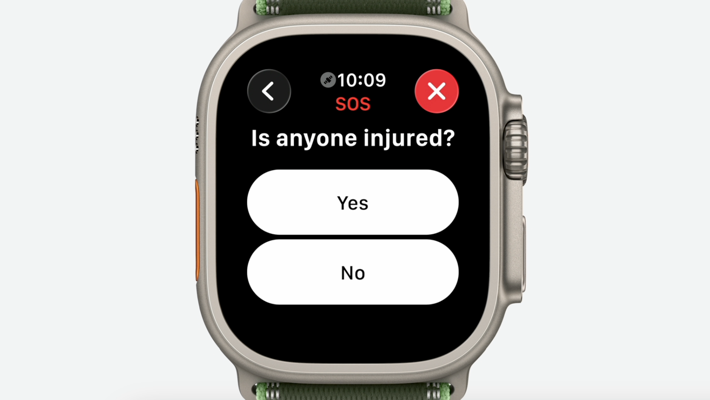
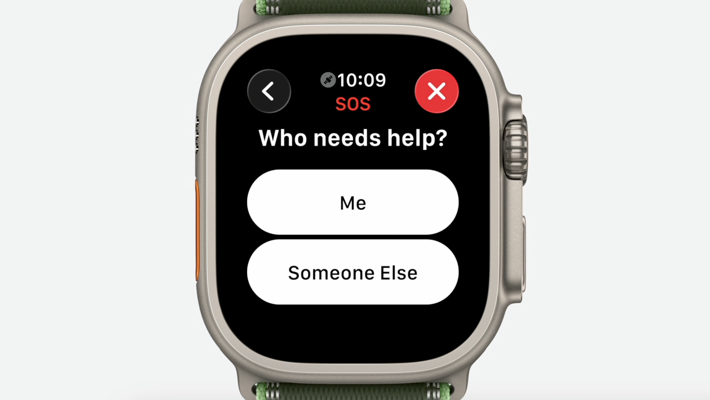
To send a message (of any type), you’ll need to raise your wrist in order to contact a satellite. Just like the iPhone, you’ll orient your body towards a satellite, which will slowly pass across the sky around you.
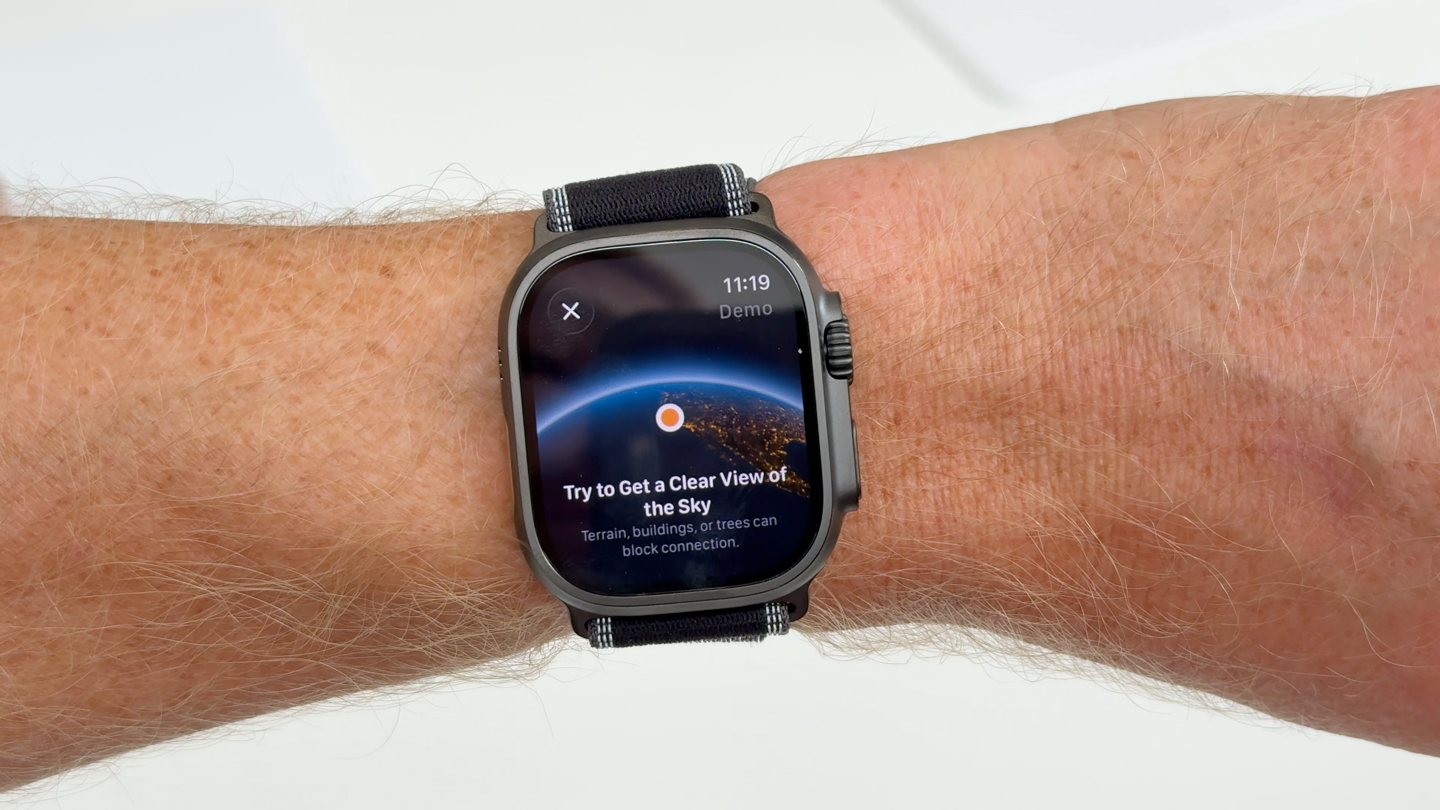
In addition to the SOS messages, there’s also the regular non-emergency messaging, and the FindMy Updates:

These act a bit differently (aside from the region areas noted above).
In the case of regular text messaging, you can use iMessage to any iMessage contact that you’ve talked to in the last 30 days (it has a 30-day limitation because it needs to maintain a secure channel which was instantiated within that time window), or any SMS contact as long as your phone is online elsewhere. Meaning, if your phone is with you (and also offline), then you’ll need to use iMessage to another contact. In terms of inbound messages, that’ll realistically only work when you manually check for them. It sounds like there is a brief time period until the satellite passes when, if you’re lucky, existing messages may sync down.
For the FindMy feature, you’re allowed to update your FindMy location every 15 minutes, manually. There is no automatic tracking here, it’s purely a manual process. Which is fine, it still updates your location and all works out.
If you were to compare how this fits into the recently announced offerings from Google and Garmin, it’s closest to Garmin’s satellite offering from a features standpoint, except Apple is free and Garmin is charging for it. Here’s where each company stands:
– Satellite SOS (Emergency): Apple, Google, Garmin
– Satellite text messaging (regular chatting): Apple, Garmin (though Garmin is a bit more complex for their messaging)
– Sending location/position (non-emergency): Apple, Garmin
Now, when it comes to technology, Apple is using LEO (Low Earth Orbit) satellites (identical to their iPhone) provided by Globalstar, whereas Google and Garmin are using GEO (Geostationary) satellites by Skylo. From a technical standpoint, this means that you’ll need to wait for and track a LEO satellite as it’s orbiting past you. On the flip side, this means that even if you have to wait a few minutes, it might have better coverage than GEO satellites if they were being blocked by a mountain/ridge/etc…
Of course, beyond all that, there’s the reality that Apple isn’t charging users for these features, whereas Garmin is charging for satellite connectivity. Though notably, Apple does require you to have a cellular plan enabled on your watch for satellite text messaging features to work. In other words, someone is still taking your money for that piece – just instead of being Apple (or Garmin), it’s your cellular carrier.
Still, I suspect this will (rightly) only frustrate Garmin users looking at the new Fenix 8 Pro/LTE models, which require a Garmin subscription for the emergency satellite SOS pieces to work on a $2,000 watch. It’ll be interesting to see if Garmin reacts.
Sleep Score & Hypertension:
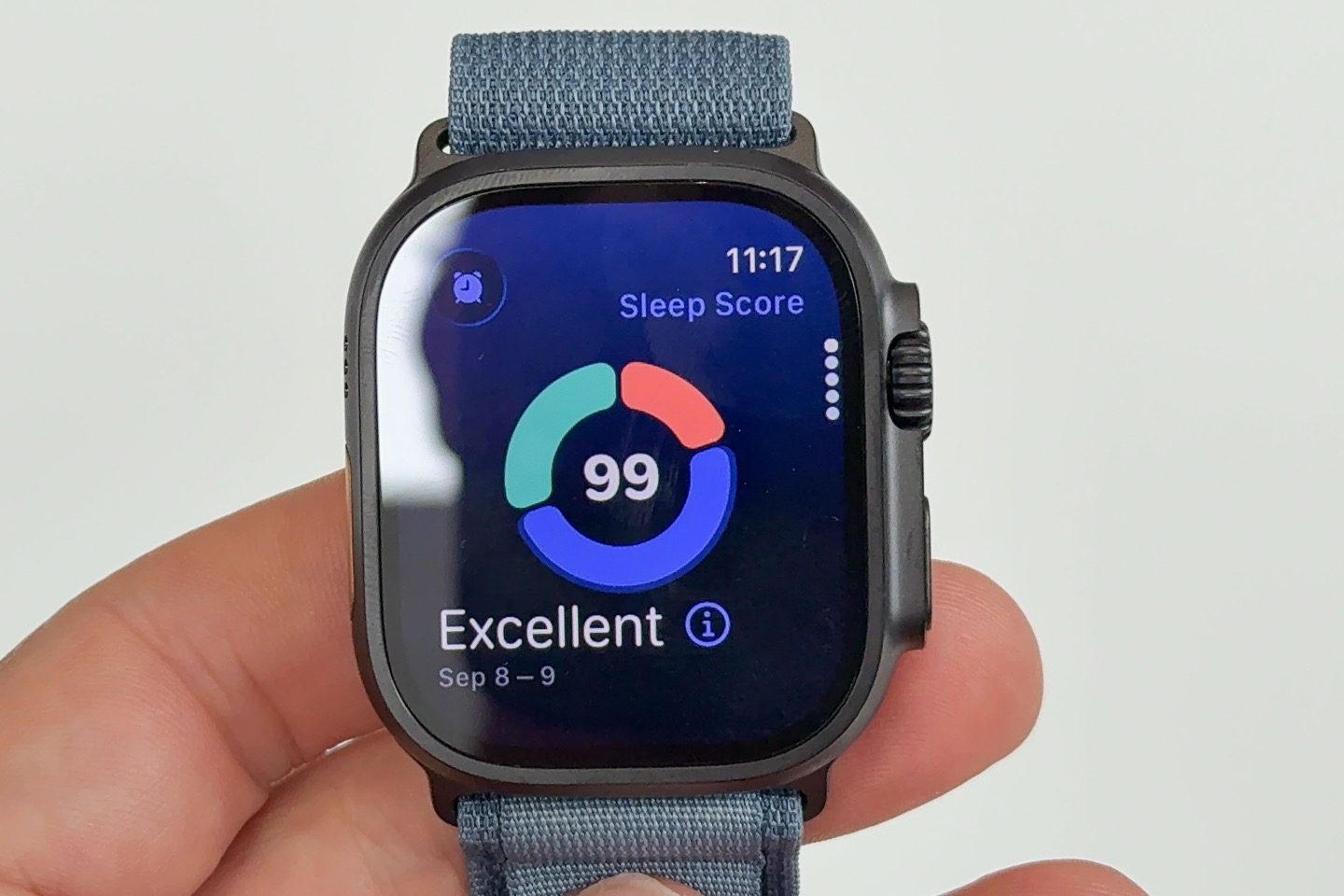
Next, Apple has added both a sleep score feature, as well as an FDA-cleared (or cleared soon) Hypertension tracking feature.
Starting with the sleep score piece, this is looking at four key sleep-related metrics:
– Sleep duration
– Bedtime consistently
– Interruptions
– Time in Sleep Stages
You’ll then get both a sleep score (number), as well as a classification, such as above (class-action is ‘Excellent’). Beyond this, you’ll get more details about how your score is compiled:
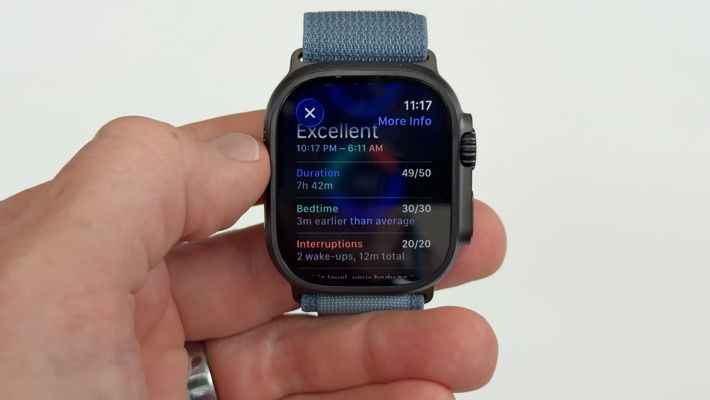
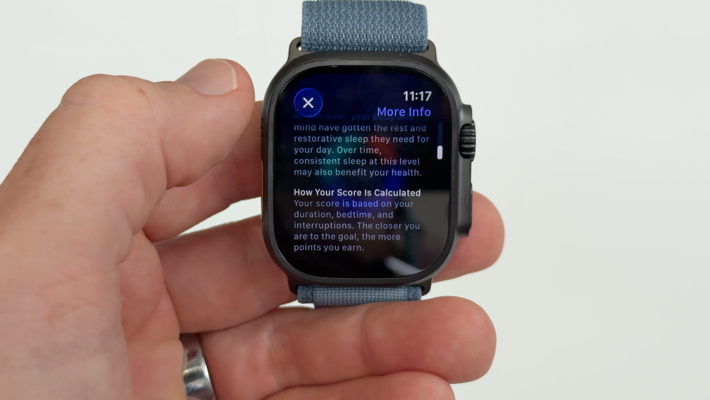
Of course, this is hardly groundbreaking in the grand scheme of wearables. In fact, almost every wearable company today has a sleep score. I occasionally compare these in reviews, against both each other and a gut check. It’ll be interesting to see how things are handled here. Apple says they leveraged more than 5 million nights of sleep from their greater study dataset. Further, the company noted that they aimed to at least provide simplicity in how the score is calculated, rather than it being entirely black magic.
Note that the Sleep Score feature will come to all Apple Watches running WatchOS 26.
Next is hypertension detection and notifications. This will require tracking for 30 days before it gives notifications, though, at least 14 of those days you must wear the watch during the day (this only tracks during the day). This feature is pending FDA clearance this month, along with regulatory approval in “150 regions” globally.
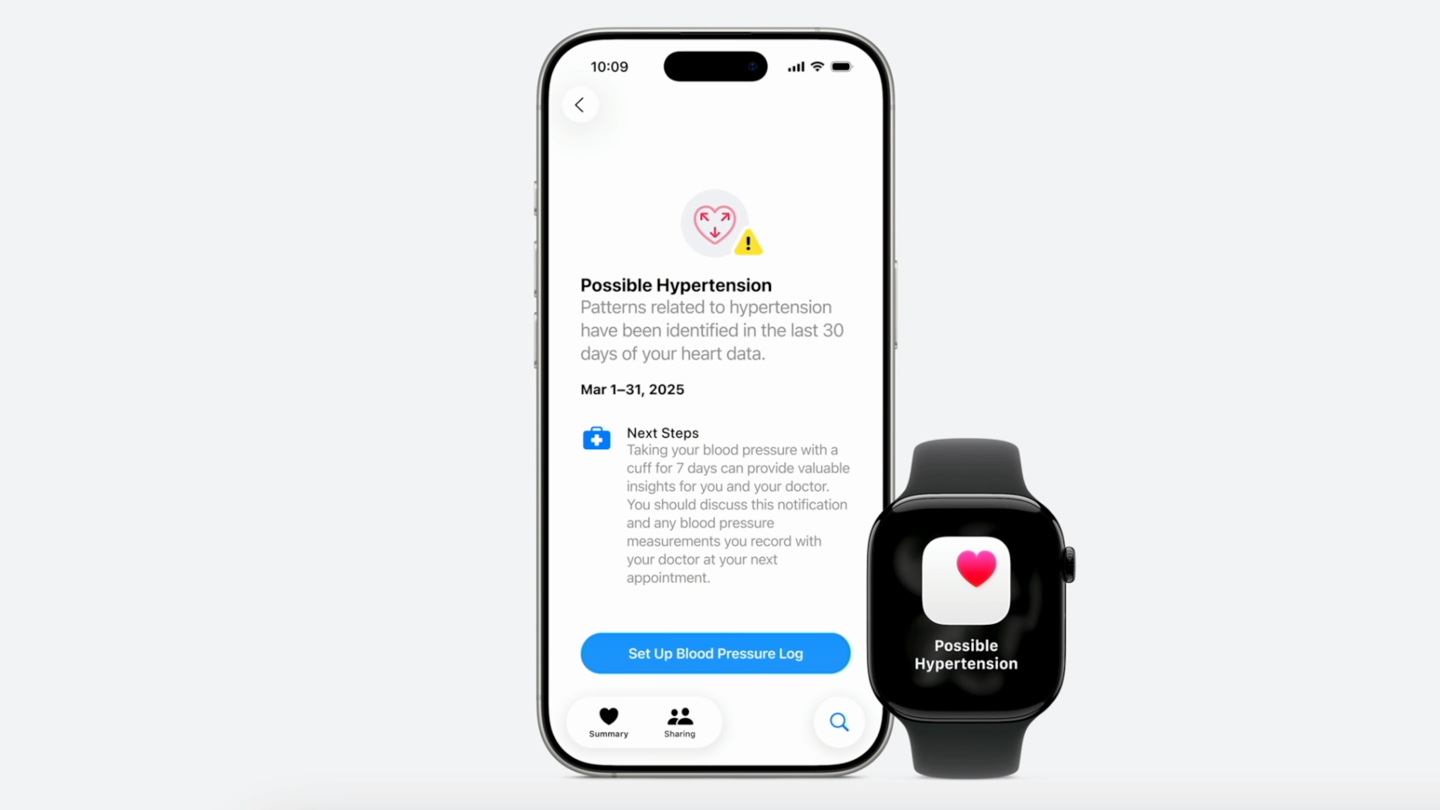
Once a hypertension notification is triggered, it’ll then recommend you acquire a blood pressure monitor, and will walk you through twice-daily (morning/night) recording of your blood pressure. From there, it combines all that data into a PDF report that you can send to your doctor. Notably, none of this requires calibration (unlike Whoop/Samsung/etc…), though inversely, it doesn’t provide a specific blood pressure number either. Said differently: This is not a blood pressure monitoring device per se.
Apple says they expect to notify over 1 million adults in the first year alone, who aren’t aware they have hypertension. Though they also noted they don’t expect to find every single case of hypertension.
Finally, the Hypertension feature will come to the Apple Watch Series 9, Series 10, Series 11, and Apple Watch Ultra 2 & Ultra 3.
Wrap-Up:
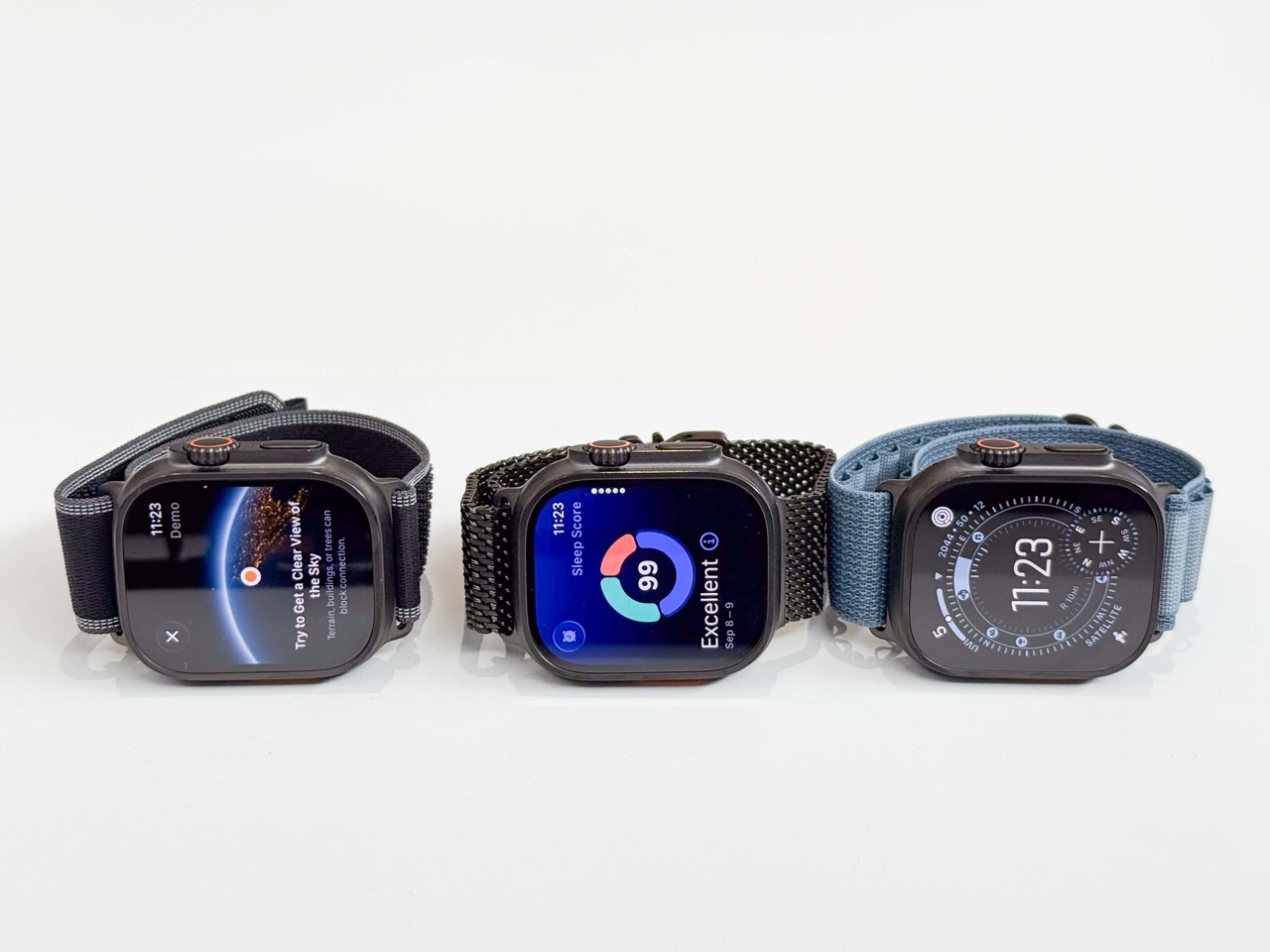
Generally speaking, Apple’s Watch releases tend to be incremental in nature. Meaning, they don’t tend to be aimed at getting the previous generation unit owners to immediately upgrade their sub-1-year-old watches. Instead, it’s designed more for getting Apple Watch owners from 3-4 years back to upgrade. But the Ultra series is different. To begin, it’s younger, and thus, there isn’t as much historical precedent.
But this time, I’d argue there’s a solid reason to upgrade even an Apple Watch Ultra 2 (which can be 1-2 years old depending on when you bought it), if you travel outside of cellular range often. Having simple texting is a massive feature for people spending time in the mountains, assuming it works well-ish from a coverage and usage standpoint.
This will be something I’ll be keen to test over the coming weeks, to see how well it compares side-by-side with both LEO and GEO-based satellite messaging options (including the iPhone). All things to dive into in the review.
With that – thanks for reading!
Found This Post Useful? Support The Site!
Hopefully you found this review/post useful. At the end of the day, I’m an athlete just like you looking for the most detail possible on a new purchase – so my review is written from the standpoint of how I used the device. The reviews generally take a lot of hours to put together, so it’s a fair bit of work (and labor of love). As you probably noticed by looking below, I also take time to answer all the questions posted in the comments – and there’s quite a bit of detail in there as well.
If you're shopping for the Apple Watch Series 11, Apple Watch Ultra 3 or Apple AirPods Pro 3 or any other accessory items, please consider using the affiliate links below! As an Amazon Associate I earn from qualifying purchases. It doesn’t cost you anything extra, but your purchases help support this website a lot.
And of course – you can always sign-up to be a DCR Supporter! That gets you an ad-free DCR, access to the DCR Shed Talkin' video series packed with behind the scenes tidbits...and it also makes you awesome. And being awesome is what it’s all about!
Thanks for reading! And as always, feel free to post comments or questions in the comments section below, I’ll be happy to try and answer them as quickly as possible. And lastly, if you felt this review was useful – I always appreciate feedback in the comments below. Thanks!

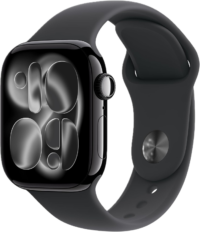

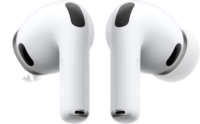





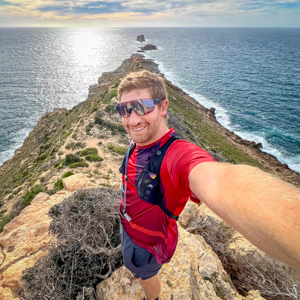







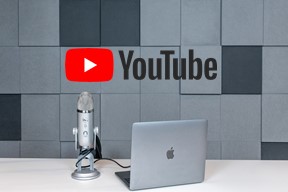



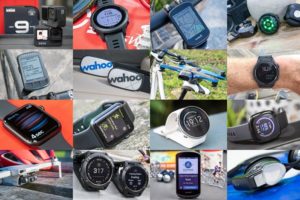

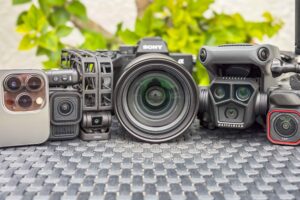

Don’t most ultra 3 wearers also have the latest iPhone 15/16/17, which also includes satellite features? I guess it makes sense if you don’t have your phone but who hikes on multi day hikes without one?
I appreciate the continued push for more battery though
Probably, but a little redundancy isn’t a bad thing. A few times I’ve simply forgotten my phone and have used LTE on my AW. And the watch is usually in an easier place to reach. On my MTB’s I carry a hydration pack and my phone is in a pocket in the pack, so in order to reach it, I have to stop and dig it out. It’s much easier to deal with the watch on my wrist.
Redundancy is always good, as is the freedom to leave your phone behind on a run or ride. I’m upgrading from my v1 Ultra 2. No (paid) Garmin sat cover from a Fenix in NZ makes it a very easy upgrade.
When I came off my bike a few years ago and broke my right leg, I found myself lying on the ground on my right hand side, with my phone under me in the right pocket of my shorts, but I simply couldn’t raise my body to get it. I know that’s just a single case, but it’s one where having redundancy in a watch could have made a difference.
Yeah my iPhone does but I really like the idea of two options. It’s not complicated.
As swimmer and surfer, the satellite feature is huge. Can’t have my phone with me in those places and I don’t get cell service sometimes even on the beach let alone in the water past the breakers.
Same goes for scuba diving. Can’t take your phone to 100 feet.
Thanks, Ray!
The Ultra 3’s thickness is noted to be 12mm while the Ultra 2 is 14.4mm. That said, I imagine they would have said “this is the thinnest Ultra ever” if that was the case and nothing like that was mentioned. Did you notice a difference or know whether this is real?
The cases are identical. So that must just be an error.
Damn. That was one thing I was really looking forward to.
I would have preferred Apple to keep the display size the same for the Ultra and reduce the case size to 47 mm, for example.
Apple actually states that the depth is now 12 mm instead of 14.2 mm.
I don’t believe this is a mistake on Apple’s part, because that would be very disappointing;)
I prefer they make the screen bigger as they did.
I was considering a Fenix 8, but wondering if this does all I need (and has some other useful stuff like working Apple Pay for most U.K. banks)
Are you going to do a comparison to Fenix 8? I would be particularly interested in how it handles triathlons/multi sport transitions, and whether it can do routing for biking/running.
The metric system is hard.
Still amazing they added satellite without changing case where Garmin made theirs thicker. Not to mention bigger screen with overall better battery life? Sounds like wins.
“To send and receive SMS/MMS from cellular models of Apple Watch over satellite, your paired iPhone must be powered on and connected to Wi-Fi or an active cellular network, but your iPhone doesn’t need to be nearby.”
I hate that the Apple Watch is still an iPhone accessory instead of being an independent device.
Thanks, Ray!
About AirPods Pro 3, what’s your gut feeling on its potential accuracy for sports?
Zero gut feel. It doesn’t have exactly the same sensor as the PowerBeats Pro’s that came out earlier (which was rough in certain areas). It’s smaller, and a bit different.
There’s obviously been improvements in the algorithm more generally, along with whatever hardware changes. I should have something up on the accuracy of that before it starts shipping.
Is the Bluetooth still set up the same? If the connectivity is the same as you reported then accuracy seems irrelevant to most of your audience anyway.
If you test the airpods, please test the wind noise in ambient mode. I have yet to find a earphone that manages that well.
Bummer that satellite messaging still isn’t coming to Europe. Don’t suppose they gave any indication to if/when that might happen?
As usual, nothing specific, except to confirm they’re definitely looking at expansion.
Thanks for trying Ray
D’ailleurs ça ne marche pas toujours pas avec les iPhones qui ont l’accès satellite : il me semble que c’est sorti avec l’iPhone 14 et sauf erreur de ma part, en Europe toujours impossible d’envoyer des messages (hors urgence) via satellite
If I understand correctly hypertension is coming to the ultra 2 and series 9/10.
I love my Garmin but man, the ultra is looking so tempting.
The Ultra makes so much more sense in every way.
Except that it sucks as a sports watch. I ordered an Ultra 3 yesterday, but my Epix 2 is and will still be my go to for activities. And if you don’t have an iPhone, forget about an Apple Watch.
Interesting POV.
Why wouldn’t you get a Series 11 or even an SE if you are still using Garmin for sports?
And why the Epix from Garmin rather than a sleeker Forerunner?
For example, on an Apple Watch, you can’t navigate and record at the same time. The Apple Watch, in spite of their publicity pictures, doesn’t have topographic maps for my area. (Yes, there are third party apps, but they don’t always work, certainly not nearly as well as Garmin’s native software). The Epix is just a much better experience for recording hiking and cross country skiing. And when skiing or cold weather hiking, I wear my Epix on the outside of my clothing where I can see it. That’s not impossible to do with an Apple Watch, but it is difficult. My current Ultra is on my wrist at the moment, and I won’t use my Epix at all today (I have an Edge 1040 for cycling). But the Epix is a much, much better sports watch, and nothing I saw yesterday makes me think anything has changed. When I go out for a ride shortly, the Ultra will remain behind on its charger.
The reason I have an Ultra rather than a Series is the battery life. I started with Series 0, and for all subsequent Apple Watches until the Ultra I got about 2 years before the battery faded so much that I had to charge my watch during the day. The Ultra has lasted me 3 years without that problem, and I could probably get another year or two out of it. But high blood pressure detection and satellite communication told me it was time for a new one. (I’ve been diagnosed and take medication for high blood pressure, so the only thing the Ultra 3 is going to be able to do is verify that, but I’m curious.)
WorkOutDoors is such a great app which works flawless, has a bunch of features (more than Garmin).
I’m using it for several years now. Not one single broken recording or something else.
Also record it with several bluetooth sensors while cycling. Without a single issue!
So definitely a good choice! And it’s cheap. (The watch and the app).
WorkOutdoors doesn’t have autoscroll, at least when I tried it. The one hike I recorded with WorkOutdoors didn’t have HR recorded in the FIT file I extracted. So, no, it’s by no means “more than Garmin”.
I’ve had corrupted Garmin files too on occasion, but the most likely reason you didn’t have HR is that you didn’t give the app permission to record health data. Apple is pretty hardcore about all data sharing being opt-in.
Anyway, a single feature not existing on the app doesn’t mean the app has fewer options. If you’ve played around much on WorkOutDoors, you’ll see tons of things that you can’t do on Garmin. Of course, as Ray always says, hardly anyone uses even a fraction of Garmin’s features, but lots of people can’t live without one or two of them, and everyone has a different dealbreaker. Case in point: I didn’t know that autoscrolling was an option, and I’ve never heard of anyone using it.
Just thinking about my ride yesterday, can it connect to an e-bike? Does it have a radar display? Can it form a light network?
I did play around a lot with it before I used it the first time. Its cross-country ski profile is much, much better than the native one in Workout. The maps aren’t as good as Garmin’s, but much better than the native Apple Maps. But it lacks auto-scroll (one of those 5% things that Ray mentions that Garmin does) and I hate having to touch my device during an activity.
“every way” EXCEPT for my list of 30 features/advantages that the Fenix 7 has over the so-called “Ultra”.
Garmin Connect website with activity data
Solar Charging
Battery Life
24/7 heart rate
Pulse Ox
Live tracking
Stress tracking
Course navigation
Recovery time
Training Load
Training Readiness
Suggested workouts
Fitness Age
Buttons and/or touchscreen
More native activities
Create custom activities
Garmin coaching is free
Works without cellular connection
Maps without cellular
GPS with 3 systems, not just 2 channels
Activity data pages have more options
Cheaper (I got my Fenix 7 for $525, while the AWU was $800.)
Not in the “ecosystem” jail
Fenix is much more rugged
Body battery
HRV tracking is all night, not just one time
Track back in an activity is automatic
Variable step goal
Gear tracking
Sensor pairing/HR Broadcasting
Morning Report
Move bar- much better than “stand up”
Weekly and annual reports
Jetlag Advisor
Sunrise/set map
Mountain bike dynamics
Golf tracking
I know a few things on this list may be out of date. I made this list when I was shopping for a watch a few years ago. So to me, the Garmin makes so much more sense in MANY MANY ways.
You also have the issue with Apple that as soon as the watch can’t see the wrist it disconnects from all external sensors permanently . Eg wearing it outside your jacket/wet suit or when it gets dislodged doing various exercises especially weights or push ups.
this is the most disingenuous list i have ever seen:
– probably about 1/4 the ultra can do
– 1/4 are a random useless garmin metics – ‘fitness age’? lol,
– 1/4 are just wrong – new fenix is not cheaper than a new ultra
– 1/4 is accurate, there are things that the garmin can do that the ultra can’t.
you are however leaving off a list that is about twice as long with all of the smart features (these are both flagship smart watches) that a garmin can’t do.
This is coming from a fenix owner with no itnention of buying an apple watch.
There’s no doubt many smart features left off that list he made, that wasn’t the point.
The point is he’s very accurate on the others, whether or not you find value in them. There’s really only a few that are debatable. Training Load, sorta Apple has it, but doesn’t give a number. So not super useful long term (or for endurance sports training). Navigation of routes, sorta, only if the route works in Apple Maps, and that’s basically useless for trail navigation outside the US. And things like proper HRV tracking at night are pretty valid too (Apple truncates it down quite heavily, unfortunately, without toggling some other settings).
As for pricing, his point is still valid. You can get previous gen units that aren’t really all that different than current gen units for equal to or less than the Ultra 3. Heck, that list above is still near-100% valid even on a Fenix E.
Again, this isn’t saying the Fenix is better for smart watch, but his points are actually really good/correct in terms of a long list of things that enudrance sports athletes do.
You’ve got a few things in here I’d take issue with (I’m a 7XSS and Ultra 2 owner/wearer):
1. 24/7 heart rate/Pulse Ox/Fenix is much more rugged(really?)/Sensor pairing/HR Broadcasting(half accurate)/Sunrise/set map(irrelevant as a map unless you plan on ending up a long way from your start, in which case it can be adjusted by roughly 2mins/day one way or the other).
2. Live tracking works on the 7X if you’re carrying a phone and are in cell service range only.
They’re both great, but they’re also both less great at different things. That’s why for now I’ll keep using both.
Ultra can’t pair with ANT+ sensors. That becomes much less of a problem as time goes on. My ANT+ sensors will eventually fail and get replaced with sensors that do both ANT+ and Bluetooth, or even Bluetooth only if enough time has passed, and those will be able to pair with my AW. There’s nothing to compare with the Tempe on the Apple side, and Tempe exists because wrist mounted devices can’t accurately measure local ambient temperature. But Garmin has discontinued Tempe, so that’s only a problem for those of us that already have them. Still, there are sensors that Garmin watches will pair with (for example, radar) that Apple watches never have.
“Disingenuous”? “No intention of buying an Apple watch?” Well, Nick, you are certainly entitled to your (WRONG) opinion.
A friend was trying to convince me to get an AWU at the time of writing my list. My wife and I were in “the ecosystem” at the time, so it was a possibility. But, when I went through the list of features that mattered to me, it was a VERY easy decision to go with the Garmin. I did not claim that “Fitness Age” was incredible, but it was on the list for things that the AWU does NOT have. May of the other things on my list are absolute MUST-HAVES which Apple simply does NOT have. (For example: Connect website, solar charging, live Tracking, course navigation, buttons AND touchscreen, maps work without cellular connection, gear tracking, Move Bar, Jetlag Advisor, and golf tracking) I never stated that the current Fenix is cheaper- I was comparing a Fenix 7 to an AWU. I got the Fenix 7 for $525. Last time I checked, $525 is less than $800 that the AWU was at the time of writing my list.
I also appreciate Ray’s reply to Nick’s comment. Ray’s YouTube channel and his review of the Fenix 7 were a huge help to me when I was making the decision of which watch to get.
Żartujesz! Mapy do Apple Watch są genialne! Piszesz o tym, że biegasz na nartach. Ciekawy jestem, jak zimą obsługujesz mapy w Garminie :D Latem jest to pukanie w szkiełko trudne, gdy biegnę, a zimą? Po prostu porażka. Jedyna przewaga Garmina Fenoxa to bateria i spójny system, który jednak w dobie TrainAsOne, Trannary, Runna, Training Today, WorkOutDoors czy FITIV Pulse też wygląda już jak sztywny memut.
Personally I use auto scroll. No need to tap on the watch face. Apple Maps do not have trails and are not topographic in my area, so I wouldn’t use them for an activity anyway. WorkOutdoors maps do, but they’re not as good as Garmin’s.
Concerning WorkOutDoors Maps… The app has Mapbox map data as standard, but you can change that to Thunderforest within settings. Takes longer to load to the watch, but the maps are much better at all!
Did you try it?
Most of those things are available on the Apple Watch also, plus orders of magnitude more third party application support, which is the real differentiator.
Kept on searching endlessly an answer to which to choose this time around, U3 or FR970.
Your answer sums it up for me as well.
With all the hype around the Apple Ultra series…the bottom line is it’s a very capable wearable watch size iPhone and that’s about it.
If Garmin prices weren’t climbing the Everest in the last 5 years with a mixture of greed and current tariffs then the choice would had been much simpler.
Sadly…as good as some of Garmin watches are I see more and more biting the apple instead of paying exorbitant sums of money.
Does it broadcast HR by any chance?
As usual, not without third-party apps.
Do any of them even work? I’ve tried several with zero success.
Some do. For example, in the past, the Peloton Apple Watch app has worked fine for me to pair with the Peloton app running on an Apple TV. Other third party apps have no done so well. It’s annoying to have every app/situation require its own watch app though.
Typically if I’m in a situation where I need to broadcast HR, I use my Polar H10 instead, which is set up to dual broadcast; I’ll send one to the app I need HR on, and the second I’ll send to the Apple Watch itself, overriding its signal. While the Apple Watch tends to do well on its own most times, in some modalities (HIIT, dumbbells, rowing) I find a chest strap better anyway.
I guess it all comes down to where on earth you live. Personally I live in a country where Apple does not provide the satellite service, but the new Garmin Fenix 8 Pro does – Which made my choose quite easy.
If only the satellite service on the Apple watch was as “broad” as Garmin’s solution, I would have been happy to switch to the AWU3
– Added Hypertension tracking/notifications (pending FDA approval)
– Added sleep score (coming to all WatchOS 26 units)
– Added new Waypoint watch face
These are coming to the AWU2, too.
Still no following routes loaded from GPX files?
This is why I wear an Ultra 2 as my smart watch and use a Garmin for ultramarathons.
You can use WorkOutdoors!
The one time I used WorkOutdoors for a hike, I wound up with a FIT file without HR, even though my Ultra has HR.
Hey Ray, great text as always, thanks for the detailed information. One point that I think should be mentioned is the difference between the SOS function of Garmin InReach and Apple. With Apple, the text message reaches a local rescue center, whereas with Garmin, it’s a global, centralized center that first has to laboriously connect with a local rescue unit. I’ve already had an emergency myself in the Italian-Swiss border region and was grateful for the InReach services, although they took more time than the emergency call made simultaneously via a local cabin phone. We were already being transported by helicopter when the team from Texas got in touch. Overall, in my opinion, Apple’s satellite function, in addition to the technical advantage of satellite coverage, is significantly superior to Garmin’s for Europe.
Using a rescue coordination centre is the standard way if working and has been for decades. EPIRBS and PLBs connect to your registered MRCC who coordinate a cross agency rescue.
Apple’s solution works for small local issues but not global. Much like a lot of their tech it’s quite US centric. When I’m out on my boat mid-ocean I know which I prefer, same if I’m doing multi-day hikes in mountains abroad (especially since the battery on the Apple will be dead on day 2!).
100% I just pointed this out as well after my serious accident in backcountry of Colorado.
Wow, that is definitely disappointing to hear and the other person mentioning similar in Colorado.
The AWU3 is nice, but still nowhere near Garmin, Suunto, or Coros for backcountry use. No real mapping/routing is a dealbreaker. I had a serious mountain accident with an AWU2 + iPhone 15, and Apple’s satellite messaging was unreliable—my InReach literally saved me. I doubt AWU3 has closed that gap. For serious outdoors, I’ll stick with my Garmin Fenix 8.
You Are Right. The Apple Watch is far on top of Garmins line
“Free for 2 years”
Beyond that, is there any price yet? Or it depends on the carrier?
Already 2 years past that limit and people are not being charged anything.
Thanks. Ok, sat text messaging only available at start for 3 countries: US, Canada, Mexico (: Btw: is the sat messaging only working, if no 5G/WiFi is available or can the user perhaps choose, which source he wants to use? Wait: AWU 3 in the USA: $799,- – in Europe/Germany € 899;- because of the MAGA taxes? Ok, (only) 6 hrs more. More is better as the 2/3 reduction for the Garmin F8 microled (but is has still has 96 hrs- which is still more than twice as much! the AWU 3 has!) I don´t think Garmin will allow SOS via satellite for free.
Don’t forget that US price are typically excluding local taxes which could differ a lot depends on where in US you live, where in EU price typically includes the taxes.
Verify that the EUR prices include VAT, which would explain the difference.
Deduct the VAT and then do the EUR/USD conversion, see what the difference is then.
The US prices never include sales tax (their equivalent to VAT) because the sales tax rate varies depending on which state/county you live.
Aside from Garmin continually shaming themselves with their pricing strategy, I am glad Apple are rubbing that point in and hope this screws their fénix 8 pro launch somewhat. Apple maitaining their prices whilst adding new features. If they can do it why’s can’t Garmin.
Apple has a ton of other income streams to subsidize the relatively small watch volume. Searching says Apple groups Apple Watch with AirPods, HomePod, and other accessories into a single category called “Wearables, Home and Accessories.” for reporting. In fiscal year 2024, this category accounted for approximately 9% of Apple’s total revenue.
And yet it’s the best selling watch in the world, and it isn’t even close.
Hi Ray, I think it is worth mentioning that according to Apple’s home page hypertension detection will come to Apple Watch 9 and later, so as to Ultra 2.
The attached screenshot shows the specs as per Apple’s website for all three generations of the Ultra.
Is Apple wrong for the AWU 3?
Looks like Apple is wrong?! They didn’t mention it during presentation and Ray says they’re looking the same.
It’s wrong, it sounds/looks like Apple has since fixed it.
It’s identical on both units. I confirmed it as well in-person, both with the Apple folks, and just looking at the two units. Atop that, Apple will happily tell you if something is 5 more pixels bigger, so 2mm thinner would have been massive! (And nobody had said anything to media about that)
Interestingly now all 3 units show 12mm (on the Canadian site)
Dearest Ray, first of all many regards from Amsterdam!
I have a question, would u go for black Ultra 3 or Titanium version?
I observed your black one (at Apple Headquarters yesterday) has some natural wear (afterall a watch does hit things :-) It has a nice patina effect perhaps.
Would you go, if you buy new one for black (because of its monochromatic look, screen and watch being one), or go for titanium? I am tempted to buy the all black titanium option and black titanium band (although metal band could be hard compared to breathing options).
Love to hear your advice!
Hartelijke groeten uit Amsterdam! (and I love your new place, hope it works on all fronts well!)
Roemer
Good question – I’m also thinking about it… The black one looks nice (and not everyone is having one). But I fear the wear of the watch compared to natural.
Having worn them both, I like the black one, but that’s just my personal preferences.
The satellite service does not working without a paying LTE subscription.
Sounds like SOS does though at least
Ray, can you verify the conditions under which the watch can use satellite communications? I thought I heard or read somewhere that your phone has to be online (connected to WiFi?). So if your phone is with you out of cellular service, the watch won’t connect to satellites, and you have to use your phone? What if your phone ran out of battery (happened to me once) during an activity? Are you just screwed then? Seems like an awfully big restriction, only useful if you left your phone at home.
The only scenario where it requires a phone be online somewhere is if you want to text SMS contacts (not iMessage), then it does.
Thanks for the clarification. That sounds more reasonable.
Give Apple credit they bringing features like Hypertension to older models….something Garmin does not do. The Epix 2 Pro was released the same time as the Ultra 2 and it hasn’t received any new features like Rucking or updated UI that has been released on newer models. You think it would be the other way around since Garmin hardware cost sometimes 2x as much.
If garmin would stop having 10 different operating systems they could do this sort of thing. The fact that the fenix and forerunner series have different OSs and prob diff dev teams just boggles my mind from a efficiency perspective. Apple has one that just trimmed down based on the hardware you have.
Fun fact: They don’t have different OS’s anymore.
Literally, that’s why the summer was a bit rough for the new Forerunner & Venu X1 releases. All three units (Forerunner/Fenix/Venu) are now on the same OS, with just a different UI skin aopt it.
Meaning, the Forerunner 570/970, Fenix 8/8Pro, and Venu X1 are all the same OS. This means that when one bug is present, you’ll see it on all. And then when fixed, you’ll see it fixed at the same time on all of them. As we saw this summer, things were a bit rough as this tribal merge happened in sight of all of us, but long term it should make things dramaically better.
This is fascinating. I would love to see an article or interview digging into it ;)
This is great to hear! Thanks for the info.
Have Apple sorted the flaw with wrist detection and having tattoos? Basically nothing works properly that relies on wrist detection if you have tattoos. Turning off wrist detection disabled many features, but leaving it on caused havoc like runs pausing because it can’t detect a wrist. Apple replaced my Ultra 2 which didn’t fix it and admitted it was a known issue.
.
wouldn’t you just connect a HRM to it (Polar for instance) to circumvent the tattoo thing? I use the Polar Verity Sense, works incredibly well with a plethora of device including the AW.
It’s not as simple as pairing a HRM to the watch as basic non training functions don’t (or didn’t) work with wrist detection turned off, and they didn’t work properly (because of tattoos) when turned on.
1) It is not called “Apple Watch Ultra 2025”
ii) It is waaaay cheaper than the Fenix 8 Pro (although I am an Android guy)
Not sure where I said Apple Watch Ultra 2025. I think in the video I may have said in reference that this was part of all the 2025 watches. Though honestly, yesterday was a blur.
Torn between this and Garmin still no real maps on Apple and the satellite messages are being routed through your phone from the ground station. So heavily tied to an operational phone somewhere. You’d have to have your phone on a charger if you left it at home for a multi-day hike. Let’s hope cellular now allows roaming – no uk operator allows independent cellular outside of home country. Apple still haven’t sorted out use in the rain with touch screen.
If you use a third party app like WorkOutDoors, maps are far better on Apple Watch than on Garmin.
Also, satellite messages are not being routed through your phone at all. Your phone can be off, and it works just fine. The phone only matters if you’re trying to message someone who you haven’t messaged in the previous 30 days.
Nonsense. WorkOutdoors maps might be Topo maps, unlike Apple’s, but things like place/street/trail names are glued to the maps rather than float like on Garmin maps. They can scroll off on WoD. The maps on my Epix 2 are better than WorkOutdoors on my Ultra.
I use footpath for planning and workoutdoors for activity. Issue is only 100m surrounding route is downloaded (sometimes slightly more) and now things like OS maps expire from your watch after 24hrs. So go off route or sleep out and you are “doomed”. They are both good apps but not having built in maps really sucks.
This might help Apple to get more and more Garmin share. I like:
– same thickness, but include cellular connection (F8 pro is thicker! than F8)
– same price
– Free messaging!
– battery improvement over previous gen (but still short of Garmin Fenix)
It would be great if you could do a hands on proper review comparison of Ultra 3 v Fenix 8 Pro v InReach (or similar). I appreciate that InReach isn’t a watch but a valid question for a watch owner is whether to keep their current watch and get an InReach. This gives you significantly better functionality than either watch, with the same monthly subscription as the F8 Pro (obviously an additional cost v Ultra 3), but lacks the LTE of either watch and is something else to carry. If the InReach messenger had the same LTE as the F8 Pro I would favour that combined with a longer battery life watch for my use case. The world is obviously different for those just wanting to run in a t shirt and shorts….
In the uk the apple watch needs a paid subscription for LTE/cellular so paying Garmin instead is same price.
To be really clear, on the Apple Watch you don’t need to to have an active cellular plan for the following Satellite features:
A) Emergency SOS
B) FindMy(Update: You do need a cellular plan for this).You do need it for satellite text messaging to work.
Hi Ray, excited about this new watch, long Time Garmin user for running, biking, sports, etc.
For the first time, I am tempted, will you compare it with the fenix 8 (pro or not)?
I wonder what I would loose if I quit Garmin. Thanks!
Yup, I’ll do a comparison.
In general though, if you’re already deep in the Garmin ecosystem (in terms of features/etc), as an endurance athlete, especially cycling, it can be a pretty tough feature-shift to Apple. Whereas if you’re previously on the Apple (or Samsung/Google) side, without that depth of specialty features, it’s an easier shift.
Ultimately just depends on which features you use. If you don’t use many of those nitty-gritty features, and mostly just use it for tracking, you won’t have a big issue swapping.
I’d love a little deep dive into the ‘mirroring’ of cycling metrics on an iPhone screen.
I can’t see myself switching from an Edge/Epix to just an AWU…would need an iPhone on the handle bars too and need to know if that actually works (well)!
Thanks, Ray, that would be really helpful.
As a former Garmin user, I do miss Body Battery, Training Readiness, and Recovery Time and was disappointed to not see watchOS 26 make any progress along those lines (though good to see Sleep Score).
As such, would really appreciate a review/comparison of the third party solutions like Athletic, Bevel, etc.
There’s additional apps that may bridge the gap. For example, “BodyState” is an iOS app that tries to replicate Body Battery, which has a small one time cost and not an ongoing subscription. The app HealthFit (also one time fee, although there’s an optional subscription that unlocks a few minor things) will give recovery time for cycling activities that include power data. Here’s an example:
I actually use both Garmin and Apple side by side — each has unique features/metrics that I find really valuable. The only “issue” is that I often end up wearing two watches at the same time, which sometimes makes me feel a bit ridiculous. Am I the only one doing this?
I sometimes do. If I go hiking it’ll generally be in the afternoon and I’ll be wearing my AW anyway. So I just put my Garmin watch on the other wrist. With the arrival of my Ultra 3 imminent, I’ll probably start wearing it during activities for the satellite communications and find some other time to charge it. So when (if, not always guaranteed around here) I get to xc ski this winter, I’ll be wearing both, one on the outside of my clothing and one on the inside on the other arm.
Welcome to the club!
🤣🤣
If people are comparing Apple’s native workout software to Garmin’s, there’s a big gap, but if you use the WorkOutDoors app to record your activities, then the only really meaningful advantages to the Garmin are: (1) the 5-button interface, which is vastly superior to touchscreen during activities, and (2) superior battery life, depending on which models you’re comparing. The Ultra mitigates both of those advantages with its action button and battery life that will cover most single-day activities.
On the other hand, I think people also overstate how much it actually matters that the Apple Watch is a “better smartwatch.” A decade after the Apple Watch launched, the ecosystem of apps is minuscule, and many companies have stopped supporting Apple Watch (e.g., you can’t call an Uber from your watch anymore). So even if the watch has the hardware to do really cool things, people aren’t coming up with them. Also, in practice, most people use their Apple Watch for things that a Garmin does just fine: notifications, weather, 24/7 health metrics, payments, and (obviously) telling the time.
The one silver bullet for Apple Watch vs. Garmin is being able to send and receive texts and calls to your regular phone number, without carrying a phone. If you don’t like carrying a phone when running and you want to be truly connected, there’s no alternative. Garmin’s new LTE watches are a step in the right direction, but the reliance on an app means that in practice, you’re connected to your spouse and maybe one or two other people.
So if you need to be able to record 10+ hour activities, you pretty much have to go Garmin. If you need to be truly connected without a phone, you have to go Apple. If neither matters to you, then either watch will do everything you need just fine.
The AW is a better smartwatch in many ways. For example, the watch face I use (Ultra Modular?) shows at the moment wind speed and direction, moon phase, battery level, time/date (obviously), current temperature and a 9 hour forecast, sunset time, air quality, all at a glance. There’s simply no way my Epix can show all of that information, unless there’s a ConnectIQ watch face I’m unfamiliar with. And AW can send/receive texts and notifications, which Apple won’t allow a Garmin watch to do. WorkOutdoors lacks autoscroll, the maps aren’t as good, and if I remember right, can’t show current weather conditions (my Epix can using the ConnectIQ Windfield.app).
Have you seen the watch face called “Centurion” from the developer TitanicTurtle? I have it on my Fenix 7. It has 10 data fields plus 4 graphs.
Currently have a 955 and AW7. I preordered the Ultra 3 right away. As a surfer, I’ve always needed LTE for emergencies on the beach but the service has always been pretty spotty and terrible in the water. Satellite has me sold for my use case. The hypertension feature is another that pushed me to upgrade.
That looks like good value for money.
Now, I would also like to see a Fenix 8 Pro for $799. Garmin definitely has its strengths, but the free SOS satellite service for two years and hypertension detection, not to mention the continuous heart condition monitoring that the AW has, are also strengths.
You could buy a proper blood pressure monitor for £15. Then you get accurate measurements instantly and not just an info free trend like many Apple measurements. 😀. Your doctor can also do a measurement and assess risk factors.
But this isn’t about blood pressure measurements. It won’t provide that.
This is about detecting Hypertension for people that’d literally have no idea they have it. And then hopefully improving their life, with said doctors’ assistance. Same concept as Sleep Apnea.
I really, reslly hope that one day, when ultra 4 comes…it will have atleast 192h battery life as watch and at least 36h when you eg run a marathon with satelit, hr and ”everything” on. Before that day I will keep using my vantage v3
How is the GPS tracking on this watch. Looks like there is dual frequency GPS so just wanted to see if you’ve tested the accuracy yet.
Thanks for another great review.
Is there any way to have 24/7 heart rate on the display of the AW Ultra 3, without pressing any button and waiting, etc- like in the Garmin watches. That’s a must for me because of a medical condition- and has prevented me from switching to AW even though I am mostly in the Apple ecosystem.
My wxperience is that apple uktra samples the HR upto every 10mins when outside an activity. You would probably kill the battery if there was a way to do this eg using an activity which gives per second HR
5% bigger so 2.45mm
Screen size is 51.45 across.
Hi Ray
Four years ago when the Ultra came out you commented on Apple’s plans to gradually add map capability. After four years they seem to have added some trails via apple maps for the USA. When are they going to get round to the ROW?? A simple step would be to use openStreet maps but we all know they are allergic to anything not done inhouse. Any updates from Apple on the strategy here??
They should fulfill their promise for the US. Here in Central Pennsylvania, they haven’t yet. Sure, they now use relief shading (not much) to indicate the terrain (instead of the topo lines I’d like), and they now have some trails, but certainly not all of them. I scroll followed one that’s part of a popular mountain bike loop (known as the “Coat Hanger” because of its shape) and it just suddenly ends. It’s also difficult to tell the difference between pavement, gravel, double track (former roads kept clearish for emergency equipment), and single track, where Garmin, at least, does a better job. So they still have work to do here.
Got my Ultra 3 today. The usual headaches while switching from one watch to another. It refused to move the eSIM, so now neither watch has cellular. Off to Verizon tomorrow. Doesn’t help that authentication codes go to my wife’s phone, and she’s away this weekend.
So it turns out that if you answer truthfully that you’ve been diagnosed with hypertension, it refuses to turn hypertension notifications on. Next I’ll have to lie and then see what happens in 30 days. It does now have me on a schedule (the same one I’ve always used) to use my Withings cuff every day.
Hi Paul S,
I’m have been looking into Workoutdoor alternatives. Looks like Toboo (link to apps.apple.com) and Trailseeker (link to trailseeker.me) apps have much better maps experience. Please try and let us know.
So far I’ve looked at Tooboo on my iPhone. The maps are fine, with one quibble, the topographic lines are labeled in meters, and switching units to feet does not change that. That’s a minor problem, though, since the purpose of topo lines is to allow you to visualize terrain on a flat surface, and changing, say, 450 m to 1476 ft seems a little silly. In order to properly label the lines in feet, you’d have to move the lines, and that’s probably too much trouble.
There are new trails recently opened in my area, and more being constructed. The maps have the new trails on them and they seem to be properly named. (The names were decided by votes after the trails were opened.) The trails currently under construction aren’t there, but that’s not surprising for a digital map.
Hi Ray, from what I read, the new watchOS supports real watch-only offline topo maps. Could you comment on how well this works, especially compared to Garmin’s TopoActive maps? Thanks!
Being able to use the Ultra for calls, payments, as a car key and as a sports watch has changed everything for me. Drive to a nice place, go for a run, car locks itself when I’m a few meters away from it, buy a bottle of water on a hot day, answer an important call, check the map. No need to carry a phone all the time. Just upgraded from the original to a Ultra 3 and wear it pretty much 24/7.
I recently picked up the AWU3 mostly for the connected features and because it syncs audible books across devices so well. I’ve been really impressed and could almost replace my Fenix, except for one thing: The massive lag every time I start, stop, or take a lap (segment). It doesn’t really matter on an easy run, but if you’re doing a set of 400s, it’s kind of a big deal that it takes almost a full second for the watch to register that you started or finished a lap. I’ve used the native workout app and a few third parties, and none of them are instant. It’s a strange limitation given that even the most basic Timex Ironman can precisely record a lap time.